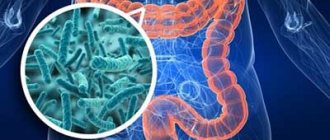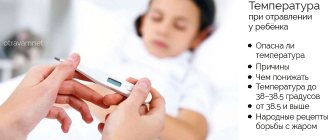Symptoms such as nausea, discomfort in the navel area, and bloating are common in children, especially in the first year of life. This condition is painful for babies. Parents do not always know why this happens and how to help their child. What to do if a child feels nauseous and has a stomach ache, how to properly eliminate the symptoms?
A child has a stomach ache and vomiting: causes and symptoms
What matters to every parent is whether their child is healthy. One of the common conditions in childhood is abdominal pain and vomiting. Usually these symptoms move in a circle, and the parents' actions depend on how they are expressed.
The first thing every parent should do is call a doctor . But you need to have at least a small idea of what is happening to the baby. If he has a stomach ache, nausea and vomiting, then you need to carefully monitor his condition, as well as provide first aid in a timely manner.
Both symptoms, vomiting and abdominal pain, are consequences of intoxication. This means that there is currently an infectious agent or toxin in your child's body.
The most common causes of these symptoms in children are:
1. Acute intestinal infection.
2. Viral infections.
3. Obstruction in the intestines.
4. The first symptoms of appendicitis.
6. Signs of gastritis.
7. Possible manifestation of gastric ulcer.
Most often, the cause is infectious in nature, but surgical pathology may also be present. Only a doctor can tell the difference.
Now let's look at each reason in more detail.
Acute intestinal infection
Otherwise, this pathology can be called food poisoning. This can only happen when eating contaminated foods. The onset of the disease is acute. The first symptoms in a child are abdominal pain and vomiting. The painful sensations will only intensify along with this.
ARVI
From the name it is clear that ARVI means a virus. The disease always begins acutely, with the first symptoms being a severe runny nose and cough. But with an increase in body temperature, the baby may complain that his stomach hurts severely, nausea and vomiting occur.
Intestinal obstruction
Intestinal obstruction can be congenital, that is, it is a developmental defect, or acquired, for example, due to intussusception.
Symptoms of this condition in children are as follows:
• stool is completely absent or delayed;
• bloating occurs with severe pain;
• vomiting, after which there is no relief;
• impurities of mucus and blood are observed in the stool.
Appendicitis
This is a surgical pathology that occurs due to inflammation of the appendix. The onset of the disease is acute, namely in childhood. Its main manifestations are as follows:
• severe pain in the abdomen;
• while walking, the pain radiates mainly to the right side;
• body temperature rises;
• feeling of pain in the lumbar region;
Cholecystitis
Cholecystitis is an inflammatory process in the gastric bladder. The cause of infection is usually staphylococcus. The development of the disease is always acute, mainly at night. The main symptom is a sharp, acute pain radiating to the shoulder blade and lower back. In addition, your stomach will begin to ache and vomiting will occur.
Gastritis
With gastritis, the mucous membrane of the stomach becomes inflamed. It develops against the background of weakened immunity. The disease occurs in children who often experience stress.
The first thing your baby will complain about is severe abdominal pain.
Ulcer
Every parent should know that ulcers are chronic. It develops quickly and often causes serious complications.
The main reason for the development of ulcers today is the Helicobacter bacterium, which makes the mucous membrane more sensitive and unprotected. Moreover, you need to be afraid not even of the ulcer itself, but of the complications that arise after it.
Main reasons
Factors that provoke stool disorders may be infectious or non-infectious. Pediatricians classify such disorders in children as follows:
Infectious diseases
Dysentery
An infectious disease common in the autumn-summer period, which is explained by the presence of a large number of fruits that a child can eat unwashed, as well as favorable conditions for the growth of bacteria on them. Children are most susceptible to the disease in the first 3 years of life, and after suffering from the disease, an unstable immunity is developed, allowing re-infection.
The cause of the disease is failure to comply with hygiene rules, consumption of contaminated food/water and contact with a sick person, due to which bacteria causing shigellosis or amoebiasis enter the digestive tract.
The severity of symptoms depends on the amount of infection. The incubation period lasts from 1 hour to several days, after which an acute onset occurs - cramping pain in the iliac region of the abdomen, elevated body temperature, severe diarrhea, in which stool is frequent (up to 25 times a day in severe cases), at first profuse. , and then scanty, green, with mucus and streaks of blood. Often there are characteristic painful false urges, leading to a gaping of the anus in a small child, and sometimes to prolapse of the rectum. Next, intoxication with vomiting, headache and lethargy manifests itself. The abdomen is painful when palpated, and there is rumbling.
The diagnosis of dysentery is made by a pediatrician or pediatric infectious disease specialist after receiving the results of a stool test, serological blood test, PCR, and rectomanoscopy.
Features of treatment depend on the severity of the pathology. Treatment can be carried out at home or in a children's infectious diseases department and includes strict bed rest, mandatory rehydration to protect the child's body from dehydration, antibacterial and symptomatic therapy, and dietary nutrition.
Rotavirus diarrhea or “stomach flu”
This disease most often affects children aged 6 months and older. up to 2 years. In groups of children, the infection can cause widespread acute diarrhea, affecting the small intestine and causing gastroenteritis. As a result, digestion is impaired, and severe diarrhea leads to dehydration.
Infection with rotavirus occurs from a sick person or a healthy virus carrier; the main mechanism of transmission is food. After the incubation period (1-5 days), cramping pain in the abdominal area and weakness begin. The characteristic development of the disease in a child begins with the fact that, waking up lethargic, he may vomit on an empty stomach, or vomiting begins after eating food or water. In this case, there is a lack of appetite, the temperature gradually rises, rising to 38°C, which is difficult to control with medications. Afterwards, profuse diarrhea appears, having a yellowish color and an unpleasant sour odor, the conjunctiva of the eyes, the mucous membrane of the pharynx and palatine arches turn red.
If characteristic symptoms occur, immediately exclude all dairy products from the children's diet (does not apply to breastfed children) and begin rehydration by taking
Regidron solution
50 ml every 3 minutes.
The disease is diagnosed by a pediatrician or infectious disease specialist, guided by clinical symptoms and epidemiological premises; the diagnosis is confirmed using electron microscopy.
There is no specific therapy for rotavirus infection; symptomatic treatment is carried out with a decrease in temperature, active rehydration, taking enzyme preparations and sorbents, and a special diet.
Salmonellosis
An infectious disease transmitted mainly from animals, including domestic ones. Infection occurs when the Salmonella microorganism enters the gastrointestinal tract. Children become infected from adult carriers (in kindergartens from service personnel) or through animal products containing the infection. Preschool children are most susceptible to infection. Newborns “pick up” infection from hospital staff and care items.
Symptoms of the disease are:
the presence of foul-smelling diarrhea with blood and particles of undigested food, high fever, nausea, severe intoxication, signs of dehydration.
Moderate bloating and rumbling upon palpation are also observed, and diarrhea lasts 2-3 weeks.
In newborns, the disease begins acutely, and its course depends on the immune system. With a favorable outcome, the manifestations are reduced to symptoms in the gastrointestinal tract; with an unfavorable outcome, they often end in death.
Diagnosis of the disease is carried out by a pediatrician: the doctor pays attention to an intensely coated tongue, pain and rumbling in the iliac region on the right, flatulence, enteric stools that have an unpleasant odor. To establish an accurate diagnosis, culture of vomit, feces, gastric and intestinal lavage water is carried out, blood and stool tests are taken, incl. to a coprogram.
Treatment of children with salmonellosis is complex: antibacterial and dietary therapy, correction of dehydration, and removal of toxins from the body are provided. Hospitalization is required only for severe forms of the disease and for children under 1 year of age who are weakened by concomitant diseases.
Gastroenteritis
The disease is formed as a result of inflammation of the mucous layer of the stomach and small intestine. It usually develops against the background of other diseases - viral (rotavirus, adenovirus, etc.), bacterial (dysentery, salmonellosis, etc.), parasitic (ascariasis, giardiasis, etc.), as well as allergies and hypersensitivity.
In addition, it may result:
poisoning with mushrooms, unripe fruits or chemicals, taking non-steroidal anti-inflammatory drugs, constant overeating, frequent consumption of unusually spicy foods.
Depending on the cause that caused gastroenteritis, the nature and severity of the symptoms (severity of pain, type of stool, high temperatures, etc.) and the unexpectedness of their appearance can vary greatly, but the set of symptoms is usually unchanged and consists of:
stomach ache; nausea and vomiting; diarrhea; muscle pain; temperature; weaknesses.
The full picture of the disease is determined after laboratory tests - urine, feces, blood, vomit, as well as ultrasound and esophagogastroduodenoscopy.
Sick children are subject to mandatory hospitalization. Treatment begins with gastric lavage, as well as rehydration and detoxification therapy, while the child is prescribed bed rest and a water-tea diet with easily digestible food. Gradually, a transition to regular food occurs, and medications are prescribed to replenish vitamin deficiencies and restore normal intestinal microflora and its mucous membrane. Also, at this stage, the use of physiotherapy leads to positive results.
Digestive system diseases
Pancreatitis
This is an autocatalytic disease of the pancreas, in which the activity of its own pancreatic enzymes increases. The prevalence among children with diseases in the gastrointestinal tract is 2-25%. The course of the disease in children differs from adults in its characteristic features and can develop against the background of impaired outflow of pancreatic secretions, bile and duodenal ulcers, ascariasis, blunt abdominal trauma, and diseases in the gastrointestinal tract.
The reason is the pathological effect on the organ of its own activated enzymes, which damage tissues, glands and ducts. Self-destruction causes inflammation in the gland, and the formation of toxic breakdown products leads to severe general intoxication.
Symptoms of pancreatitis in children are milder with rare cases of severe forms. The acute form in older children is characterized by acute paroxysmal pain that surrounds or radiates to the right hypochondrium. Dyspeptic disorders are characterized by nausea, repeated vomiting, diarrhea, often having a light gray tint, flatulence, pale skin, cyanosis and marbling of the extremities, white plaque and dry mouth, increasing intoxication, irritation of the peritoneum. In the chronic form, appetite decreases, aching pain in the epigastrium periodically occurs, which is aggravated by poor nutrition, physical or emotional stress. In this case, heartburn, nausea, alternating diarrhea and constipation, and weight loss are observed.
Diagnosis of the disease in children is carried out by a pediatrician based on blood and urine tests, coprograms, ultrasound and CT scans of the peritoneum, and fluoroscopy.
Treatment includes a gentle diet, the use of enzyme preparations and antibiotics, antisecretory and antispasmodic agents. In extreme cases, surgery may be required.
Cholecystitis
This is an inflammatory pathology of the gallbladder with damage to the bile ducts, occurring in acute or chronic form. In children it is one of the most common diseases, while acute and purulent forms are very rare.
The cause is infection - bacilli, Proteus, cocci, against the background of giardiasis or helminthic invasion of the biliary tract.
When the disease occurs, the child complains of bitterness in the mouth, pain in the right side under the rib, sometimes paroxysmal, pain when pressing on this area. Nausea, diarrhea, fever, and bad breath are also observed. At the same time, in the older age category of children the symptoms are more distinct, while in the younger category they are practically not observed.
When diagnosing the disease, the pediatrician pays attention to paroxysmal pain on the right side under the rib after eating spicy or fatty foods, nausea and vomiting, and enlarged liver. The diagnosis is confirmed by duodenal intubation, cholecystography, and blood tests.
Treatment includes:
mandatory bed rest, taking antibiotics and bile ducts, physiotherapy, diet adjustments.
Nutrition-related (nutritional)
Dyspeptic diarrhea
The cause of the disorder is the body’s reaction to an incorrectly selected child’s diet, as a result of which the food is not fully digested, because There is a lack of pancreatic and liver enzymes.
Symptoms are frequent stools with a consistency ranging from mush to water with flakes, in which admixtures of mucus, greens, yellowish and whitish lumps are noticeable, temperature - 37-37.5 ° C, at which the child is periodically capricious.
Diagnosis is made by a pediatrician or gastroenterologist based on blood and stool tests, gastrointestinal examinations in order to exclude diseases that have similar symptoms.
Treatment includes:
constant rehydration, the use of enzyme preparations and B vitamins, intestinal antiseptics are prescribed for microbial processes, compliance with hygienic conditions and daily routine.
Toxic diarrhea
The cause is kidney failure caused by mercury or arsenic poisoning.
The disease manifests itself as severe intoxication, which results in diarrhea, nausea, vomiting, stomach cramps, and increased salivation.
The diagnosis is made based on blood, urine and vomit tests. Treatment includes gastric lavage, the use of sorbents, rehydration, and the use of antidotes.
Drug-induced diarrhea
It occurs as a result of incorrectly selected medications that suppress intestinal function and cause dysbiosis.
Symptoms, diagnosis and treatment are similar to toxic poisoning.
Food allergies
The reason is the high individual susceptibility of the immune system to the individual components of food that it contains. It can occur as a result of improper nutrition of a woman during pregnancy or complementary feeding of the child.
The disease manifests itself:
skin reaction (rash, skin spots, nodules, blisters, itching), nausea, vomiting, intestinal colic, diarrhea.
The severity of symptoms depends on the amount of allergen, the time elapsed after its ingestion and the characteristics of the child’s immunity.
Diagnosis consists of examining hereditary factors, blood tests, and skin tests by an allergist.
Treatment includes adjustments to the child’s personal hygiene, diet and environment, and the use of antiallergic medications.
Food poisoning
It can occur as a result of eating obviously poisonous foods (mushrooms, berries, plant parts and seeds) or toxic chemicals, as well as food containing toxins or pathogens.
Symptoms in a child in most cases are manifested by sudden nausea, vomiting, diarrhea, abdominal pain from aching to acute, which manifests itself continuously or in attacks. In severe poisoning, vomiting occurs up to 15 times a day, and watery diarrhea may include mucus, blood and green matter. At the same time, the child becomes capricious and lethargic.
In addition, you may experience:
increased body temperature, pale skin, dry mouth, increased heart rate and breathing, decreased amount of urine and darker color.
In case of serious poisoning, infectious-toxic shock may occur.
When nausea and vomiting occur, one of the points of first aid is gastric lavage, which prevents the absorption of poisons and toxins into the blood, preventing complications.
For this, the following solutions are used:
Potassium permanganate solution (not used for severe poisoning). Should be filtered and pale pink in color. A solution of table salt prevents the movement of poisons into the intestines, causing spasm of the gastric sphincter. Prepared by dissolving 2 tbsp. l. salt in 5 liters of water. At the age of up to 3 years, the procedure is carried out with an isotonic NaCl solution.
The pediatrician is involved in identifying the reasons that caused the above symptoms in a small patient based on a survey of him and his parents, a visual examination of the child and his secretions, as well as the results of laboratory tests of blood, feces and urine, bacteriological and toxicological studies of feces, vomit and rinsing waters.
Treatment of a child with food poisoning is carried out in a hospital setting with the use of enterosorbents, antidotes, antibiotics and antidiarrheals, and also includes gastric lavage, combating dehydration, restoring the water-salt regime and a special diet.
The diet for food poisoning provides a gentle diet for the child. For the first 4-6 hours after the onset of symptoms, food is refused, but drinking is mandatory. Food should be liquid and pureed, taken in small portions up to 8 times a day. It is advisable to give up sweets, whole milk, and fresh bread to prevent fermentation processes in the intestines, and use a minimum of fat.
Until recovery, food is steamed, raw fruits and vegetables, fatty and fried foods, spices and black bread, and freshly squeezed juices are excluded. It is advisable to consume the following products:
Porridge based on water or diluted milk. Vegetable soups and pureed boiled meat. Rusks and yesterday's bread. Dairy products.
Traditional methods for poisoning are quite effective, the use of which must be agreed upon with a doctor:
Ginger decoction. Prepared from 1 tsp. dry ginger, diluted in 25 ml of boiling water. After infusing for 3 minutes and cooling, take 1 tsp every hour. A decoction of dill and honey. Prepared from fresh dill (1 tbsp), dry (1 tsp) or seeds (1/2 tsp) by boiling for 25 minutes in a glass of water. After cooling, the volume of water is brought to the original volume and 1 tbsp is dissolved in it. honey Take 50 g half an hour before meals 3 times a day. Marshmallow root in the amount of 1 tsp. pour boiling water and leave for half an hour. After straining, add a little honey and give 1 tsp 4 times a day.
Dysbacteriosis
The disease most often affects children under 3 years of age.
The reasons are:
poor nutrition, problems with lactose compatibility, taking antibiotics by a child or a nursing mother, late initiation of breastfeeding, unsystematic selection of artificial formulas, certain infectious diseases, allergies to certain foods, weak immunity, difficult environmental conditions.
Symptoms of the disease in children do not have specific features; they are mainly expressed by pain and gurgling in the abdomen, severe diarrhea, anxiety, weakness, and severe dyspeptic disorders. In this case, the consistency of the stool is watery; there may be remains of undigested food, mucus and an unpleasant odor, which indicates the infectious nature of dysbacteriosis. The disease is often accompanied by dermatitis and diathesis.
In children, a characteristic sign of dysbiosis is an increase in the number of bowel movements, even when
diarrhea or constipation
absent.
Diagnosis of the disease is carried out by a pediatrician or pediatric infectious disease specialist based on microbiological analysis of stool and coprogram. Treatment of children for dysbiosis involves correcting their diet and using probiotics.
Appendicitis
Occurs as a result of inflammation of the appendage of the cecum. It can develop at any age, but most often occurs in children aged 5 to 14 years, while girls suffer from pathology 2 times more often.
At the beginning of inflammation, the pain is not clearly localized, difficult to distinguish from other diseases, it usually occurs in the pit of the stomach and spreads throughout the abdomen, can be felt in the upper part, after which the pain is localized on the right and becomes more pronounced. When coughing, moving or walking, the pain worsens, the child keeps his hands on the right side of the abdomen. The intensity of the pain varies, but is constant and incessant.
With a sharp increase, urgent hospitalization is required, due to the high probability of rupture of the appendix. Sharp pain with restlessness indicates the development of a purulent process.
In addition to pain, accompanied by crying, refusal to eat, poor sleep, the following may appear:
high temperature, bloating, problems with urination, tachycardia, bowel movements, and sometimes vomiting.
Diarrhea with appendicitis is rare.
Diagnosis of appendicitis in children is made by a pediatrician or surgeon. Self-palpation of a child’s abdomen is not allowed. Recognition is carried out using laboratory, physical, and, if necessary, instrumental examination, ultrasound, CT and fluoroscopy of the abdominal cavity.
Appendicitis in a child of any age, as well as in an adult, is treated with surgery, with the preliminary administration of antibiotics and infusion therapy.
If a child has a stomach ache and appendicitis is suspected, he should be immediately hospitalized and examined. In this case, it is forbidden to place a heating pad on the stomach, do an enema, or use laxatives and painkillers.
Neurological
Neurological diarrhea develops as a result of nervous exhaustion of the body in an unfavorable home environment or at school, in infancy - during teething. It is marked by epigastric pain of varying nature and intensity, caused by impaired intestinal motor function.
The diagnosis of this type of diarrhea is made by a pediatric neurologist, gastroenterologist or pediatrician after a conversation with the child and his visual examination. Treatment is carried out by normalizing the mental state and adjusting the diet.
What else can abdominal pain and diarrhea indicate?
Various combinations of diarrhea and abdominal pain in a child indicate the presence of the following diseases or disorders:
Severe abdominal pain and diarrhea are a clear sign of poisoning, dysbacteriosis, helminthic infestation or food allergy. Abdominal pain without diarrhea occurs with urinary tract infections (pyelonephritis, cystitis, inflammation of the uterine appendages in little girls), inflammation of the lymph nodes in the intestinal mesentery. Abdominal pain after diarrhea often appears with ulcerative colitis, gastroenteritis, Crohn's disease and tumors in the gastrointestinal tract. Abdominal pain before stool is most common in children with constipation or difficulty moving stool through the intestines.
A child has a stomach ache and vomiting: first aid
After severe abdominal pain and vomiting occur, you must call an ambulance or call the doctor on duty. You need to talk in detail about your child’s condition, and then listen to all the specialist’s recommendations. Before the doctor arrives, you need to provide first aid, which will make the child’s condition a little easier:
1. Give water at room temperature to drink, but not much.
2. If abdominal pain and vomiting are accompanied by fever, give any antipyretic drug, such as Paracetamol or Ibuprofen.
3. Place him on the bed, put a high pillow under his head so that his head is slightly higher than his entire body. In case of sudden vomiting, the child will not choke on the vomit.
4. If the abdominal pain is severe and difficult to endure, give one No-shpa painkiller tablet.
What you should never do:
1. Do not try to flush the stomach yourself.
2. After the last attack of vomiting, you cannot feed the child for 5-6 hours.
3. Do not apply ice or heating pads to your stomach to relieve pain.
These are the main activities that will alleviate the baby’s condition.
At what temperature should you consult a doctor?
If a baby's temperature rises above 37.5°C, it must be brought down with antipyretics. But if the fever is accompanied by other symptoms, consult a doctor immediately:
- cramping pain in the right hypochondrium;
- pain symptoms radiate to the leg, arm;
- irritable, tearful state of the baby;
- wants to lie down on the right side to relieve pain;
- does not allow you to touch your stomach;
- increased vomiting;
- temperature increase 39-40̊ C;
- diarrhea.
You should call an ambulance if symptoms become more frequent and do not go away within 2 hours. It is important to provide timely assistance to a small patient to avoid complications.
The child has a stomach ache and vomiting: medications
As a result of abdominal pain and repeated vomiting, dehydration may occur, which will cause even more harm than the infection itself, which is why you need to give water, little but often.
Especially for such cases, every parent should have a drug like Regidron in their medicine cabinet; it is suitable for adults and children. Following the instructions, dilute the powder in warm water, then let the child drink in small portions every 15-30 minutes. Surely many people have a question, why do you need to give this saline solution? The thing is that after repeated vomiting, the body loses a lot of salt, thanks to taking Regidron, the lost salt balance will quickly be restored.
If a child has severe stomach pain, it means that the vomiting is most likely caused by an intestinal infection. After these symptoms, the next one may occur - diarrhea, this is nothing more than a protective reaction of the body. Such a symptom will indicate that the infection from the stomach has begun to move to the intestines, and the body is thus trying in every possible way to expel it. In this case, smecta or activated carbon will help.
After vomiting has ceased to bother you, you need to restore the microflora in the stomach as soon as possible. It is best to call your pediatrician and ask what medications should be given in this case to destroy pathogenic bacteria.
Many doctors are inclined to believe that in case of abdominal pain, the child should not be given painkillers before their arrival. The thing is that medications can smooth out the serious symptoms of surgical pathology. But if it is known for sure that there is no such pathology, you can give No-shpu as mentioned above, as well as buscopan.
Not all children take pills, and, unfortunately, you cannot force them, so you can offer to drink chamomile or mint tea.
All these measures are temporary; if the condition does not improve, then of course you need to visit a medical facility, take the necessary tests to determine the cause of pain and vomiting, and then wait for a doctor’s appointment.
Treatment of acetone syndrome
What are the treatment methods for abdominal pain, fever, vomiting in children?
View gallery
With this disease, hospitalization of the child is required. Nutrition correction is being carried out. The amount of fat is limited, and easily digestible carbohydrates are introduced into the diet. The patient should drink frequently, but in small quantities.
A cleansing enema (sodium bicarbonate solution) is given. Neutralization of ketone bodies located in the intestines occurs.
Oral rehydration for this disease is carried out using alkaline mineral water and combined solutions.
In case of obvious dehydration, infusion therapy is prescribed. Intravenous administration of glucose 5% and saline solutions.
With timely and proper treatment, the crisis disappears on the fifth day.
Child has stomach pain and vomiting: home remedies
Vomiting and abdominal pain in children can often be treated at home. Make sure your child rests as much as possible and drinks more fluids (to prevent dehydration). Try not to give him too hard food during all the symptoms. It is also better not to give antibiotics and aspirin on your own, unless, of course, they are prescribed by the attending physician.
If severe abdominal pain and vomiting occur, parents should closely monitor the condition of their child; if it worsens, they should call an ambulance.
Rest
Every child with severe abdominal pain needs constant rest. If the pain is due to gas formation, it can be relieved by lying on your stomach. But of course, the best position is considered to be one in which the baby feels significant relief.
Diet
As already mentioned, solid foods must be completely eliminated, and ensure constant drinking. If accompanied by vomiting, dehydration may occur. Under no circumstances should you let him drink carbonated or highly sweet drinks.
Infants in this condition should not be given boiled milk and water, as this will cause an imbalance in the salt balance in the body. Try to resume feeding your baby as soon as possible.
Solid foods
Your baby will let you know when it is safe to give him solid food. But you need to introduce it slowly, first give cookies or toast, and only then regular food.
Many medications only block pain for a while. Antibiotics have a very bad effect on the stomach, so the immune system is greatly weakened.
To treat abdominal pain and vomiting in a child, you can use some recipes from traditional medicine. Unlike many medications, they cope with the problem faster without causing any harm to the body.
Potato juice and honey
Thanks to this drink, you can save your child from gastritis or ulcers. Pour water into a container and grate the potatoes into it, then strain everything. Add a little honey to the water with potato juice. Place the resulting drink in the refrigerator for several hours so that it can infuse. Give your child a drink every day before bed, always on an empty stomach.
Plantain and chamomile
You can get rid of severe abdominal pain using the following tincture: take dry chamomile leaves and fresh plantain leaves, mix. Pour the herbs with water and put on the fire, bringing to a boil, reduce the heat and simmer for 30 minutes. After the broth is ready, add a few blueberries to it. Let it brew for 3-4 hours, strain and give it to your child to drink 6-7 times a day, in small portions.
Gooseberries, honey and dandelion
Take a small amount of dandelions and mince them, then add honey and mix thoroughly. Pour boiling water over everything and add gooseberries. Place on the fire, bring to a boil, and cook for 10 minutes. Give the cooled product to your child for vomiting and severe abdominal pain.
When children get sick, it is always very bad; many parents are ready to get sick themselves rather than watch their child suffer. But, unfortunately, nothing can be done about it, this is how the world works, and everyone gets sick sometimes. Therefore, mothers and fathers can only alleviate the condition of their children, as well as support them with care and love.
The well-being of their own child is more important for parents than anything else. When a son or daughter gets sick and loses interest in life, the mother’s heart breaks. Children are exposed to viruses and bacteria that cause symptoms of diseases of various etiologies. Often, concerns about the baby's health can cause abdominal pain, nausea, and vomiting. The symptoms are interrelated and are inherent in diseases of the gastrointestinal tract, toxic infections, and sunstroke. It is important to monitor the occurrence of changes in the offspring’s usual behavior. If pain or vomiting occurs, take your temperature, call the clinic, or an ambulance (depending on the severity of the symptoms).
Causes of vomiting and abdominal pain in a child
When a baby has a stomach ache, nausea, vomiting, there is an infection or food toxin in the body. Factors in the development of common signs of diseases are:
- Acute respiratory viral infection (including intestinal flu);
- Acute intestinal infection;
- Gastritis;
- Cholecystitis;
- Inflammation of the appendix;
- Ulcer in the stomach;
- Intestinal obstruction.
An experienced medical professional will help you understand what causes discomfort to the child, provokes vomiting, or stomach cramps. It is impossible to delay diagnosis and treatment.
A respiratory viral infection enters the body orally (through kissing), through airborne droplets, or after touching contaminated objects with subsequent transfer of the virus to the mucous membrane. The susceptibility of children to ARVI is higher than that of adults due to reduced immunity. The disease begins in an acute form with an intense runny nose and cough. Rising temperature and headache aggravate the condition. The baby complains that his stomach hurts and he feels nauseous. Single vomiting is provoked by fever.
The pediatrician will prescribe an antipyretic, immunomodulator, and antiviral agent. The cause of the gag reflex is neutralized by antiemetic drugs. For respiratory infections, drinking plenty of fluids, limiting food and complete rest is recommended.
Rotavirus infection
Intestinal flu is common in children. The causative agents of rotavirus infection are brought by a daughter or son from a kindergarten, school, or section. The younger the patient is, the more severe the symptoms of the disease are tolerable. Pathogenic microorganisms immediately affect the intestinal mucosa. The amount of pathogen and the state of immunity affects the rate of development of the disease in the child.
It begins like a typical flu - runny nose, sore throat, cough. Signs of a cold disappear, and dyspepsia (bloating) occurs. This distinguishes intestinal flu from gastrointestinal diseases that are periodically accompanied by diarrhea. Specific factors of infection:
- Throat hyperemia;
- Mild rhinitis, cough;
- Stomach growls and hurts;
- Diarrhea with copious discharge of masses of clay-like consistency with a pungent odor up to ten times a day;
- Nausea, repeated vomiting;
- Low-grade or elevated temperature;
- Decreased mood, weakness.
Younger age and a weakened immune system delay recovery. In severe cases, babies develop renal failure, dehydration, and hemodynamic changes. A parent can avoid negative consequences after suffering a pathology by strictly following the doctor’s recommendations. Manifestations of the disease are similar to salmonellosis, dysentery, and food poisoning. To exclude serious illnesses, the doctor prescribes additional tests. Timely treatment will help avoid complications.
Data decryption
| Index | Above normal | Below normal |
| Total protein | Autoimmune diseases, extensive burns, infections, tumors | Inflammatory processes, liver and intestinal diseases, intoxication, exhaustion, kidney disease |
| Albumin | Extensive burns, dehydration | Malabsorption syndrome, gastrointestinal diseases, fasting |
| Globulins | Inflammatory processes, infections | Liver and kidney diseases, hemolytic anemia |
| Glucose | Diabetes mellitus, liver disease | Poor diet, insulinoma, fasting |
| Creatinine | Use of certain medications, kidney disease | |
| Urea | Intestinal obstruction, poor diet, gastrointestinal bleeding | Lack of protein in food, liver damage |
Biochemical analysis alone cannot tell about the baby’s health status. Additional procedures are prescribed: ultrasound, computed tomography, urinalysis, etc.
Acute intestinal infection
This disease is interpreted as food poisoning or foodborne illness. Food contaminated with pathogenic microflora disrupts the functionality of digestion and provokes the development of the following symptoms:
- Nausea, vomiting;
- Increased body temperature;
- Diarrhea;
- Abdominal colic;
- Loss of moisture from the body, leading to dry skin.
Course of the disease
The passage of vomit brings short-term relief to the little person. Diarrhea is accompanied by repeated urges. Frequent bowel movements aggravate severe pain in the abdominal cavity. Losing a significant amount of fluid dehydrates the body. The temperature rises, the baby becomes lethargic and apathetic. Lost appetite.
Rinsing will help in case of poisoning if toxins enter the stomach. A salt solution (a tablespoon per liter of boiled water at room temperature) will help with washing the stomach of older children. Mild poisoning resolves by inducing vomiting by applying pressure to the root of the tongue.
A rehydron solution taken in small sips will help save a child from dehydration. Absorbing drugs are taken after vomiting to quickly remove toxins from the body. The doctor prescribes intestinal bactericides and probiotic preparations.
Intestinal obstruction
Obstruction occurs in any part of the small or large intestine as a violation of intrauterine development. Difficulty in the movement of digested food, as well as complete blockade, occurs after severe blockage of the intestinal lumen or inflammation of the mucous wall.
Signs of intestinal obstruction:
- Prolonged absence or delay in bowel movements;
- Painful, tight belly;
- Persistent nausea, vomiting without improvement;
- Nervous overexcitation causing insomnia;
- Mucus and bloody discharge during bowel movements.
The pathology occurs without fever. Eliminated by surgery if conservative treatment (lavage, administration of hypertonic fluids) does not work.
Inflammatory diseases of the gastrointestinal tract
Among the inflammatory processes of the digestive tract in children, acute inflammation of the appendix, stomach or gall bladder, and gastric ulcer may occur.
Acute appendicitis
Inflammation of the vermiform branch of the cecum occurs at any age. The younger the child is, the more difficult it is for him to describe sensations. The pain first appears in the gastric region, then migrates to the right side to the ilium. The painful feeling constantly intensifies as the disease progresses and causes anxiety when moving, coughing, or turning the body.
The main signs of acute appendicitis:
- Low-grade fever, temperature rise to 37-38 degrees;
- Abdominal pain radiating to the back;
- Dryness of the oral mucosa;
- Nausea, without relief by vomiting;
- Loose stools. Children experience difficulty passing urine due to irritation of the bladder by the appendix.
The lower abdomen is tense on palpation. Muscle tone increases with external compression of the sigmoid colon and with deep inspiration. In case of acute appendicitis, the child is sent for emergency surgery. Painkillers cannot be given.
Acute cholecystitis
Parasitic or microbial inflammation of the gallbladder in a teenager or child is provoked by infections caused by Escherichia coli, staphylococci, and Proteus. Manifestations of the disease disturb at night, awakening the child with soreness in the right side. Localization of pain can be difficult and may be accompanied by tension in the peritoneum and enlargement of the liver.
- Cutting pain radiating to the lower back, under the shoulder blade;
- Decreased appetite;
- Attack of nausea, vomiting;
- Constipation, diarrhea;
- Bitterness in the mouth.
The abdomen is painful on palpation. The little man needs urgent hospitalization. Bed rest, a gentle diet and therapeutic therapy with antibiotics are prescribed. The child is advised to do special gymnastics.
Gastritis in the acute stage
Poor nutrition and a nervous environment provoke inflammation of the gastric mucosa. The situation is aggravated by reduced immunity. The baby complains of pain after eating sour food. Hunger is just as painful. What symptom should parents pay attention to:
- Weakness;
- Stomach cramp after vomiting;
- Nausea;
- The body freezes when the temperature rises;
- The tongue is coated, the skin is bluish;
- Feeling of heaviness in the stomach, severe pain in the epigastrium.
Doctors prescribe a diet with plenty of fluid intake and medications for pain.
Chronic pathology develops over a short period of time and can often cause complications. The protective functions of the mucous membrane are weakened by the bacterium Helicobacter pylori. The progression of the disease is facilitated by stress and genetic predisposition.
- Cravings in the stomach after eating. Projected onto the spinal region.
- Heartburn during fasting and at night.
- Nausea, vomiting with temporary relief.
Therapeutic measures are based on diet. The child will be helped by antibacterial drugs and antispasmodics.
Acetonemic syndrome
This is a condition caused by metabolic disorders and the formation of ketone bodies in the child’s blood. That is, there are not enough carbohydrates or excess fatty acids in the baby’s body, which cause intoxication.
View gallery
Factors causing this condition also include:
- insufficient amount of liver enzymes that participate in oxidation processes;
- decreased ketolysis;
- violation of water-electrolyte balance and acid-base balance;
- stress and pain;
- infections;
- fasting, overeating;
- eating large amounts of protein and fatty foods.
What are the symptoms of acetone syndrome in children?
- increased excitability and fearfulness;
- restless sleep and nervousness;
- specific odor from the mouth.
Frequent acetone crises can develop suddenly. Sometimes they are accompanied by precursors: lethargy, lack of appetite, nausea, headache.
The crisis is accompanied by incessant vomiting, signs of intoxication, muscle hypotonia, pale skin with a painful blush on the cheeks. Drowsiness, weakness, cramps and meningeal symptoms, fever, abdominal pain, smell of acetone from the mouth, diarrhea or constipation are observed.
The disease most often appears in children two to three years old. By the age of seven, attacks become more frequent, and by the age of thirteen (puberty) they disappear.
Help before the doctor arrives
There are many factors for the development of abdominal pain in children under one year of age and older - nervous shock, viruses, bacteria. Self-treatment is not encouraged. It is important to provide first aid before the ambulance arrives or a visit to the pediatrician.
If the above signs of disease are detected, an ambulance is called. The operator is told the root of the complaints, the location of the pain, the presence of fever, nausea with or without vomiting. Children usually hold the sore spot with their hands. It will be easier for the doctor to perform manipulations if he knows about the presence of chronic pathologies.
What is prohibited and allowed:
- Self-medication.
- Warming or cooling the abdomen.
- Gastric lavage.
- Taking food and medications.
If the pain is unbearable, you can take a no-shpa tablet. The child is laid horizontally with the head of the bed raised. Intense fever can be treated with an antipyretic. You can maintain water balance in the body by taking fractional intakes of water, rehydron, or rice water. It is important to support the offspring until the doctor arrives, without destroying the symptoms of the disease.
Most often, if a child is sick and has a stomach ache, young mothers suspect food poisoning. Most likely, this is the problem.
But we should not forget that such symptoms may also indicate other pathological processes occurring in the baby’s body.
For example, gastroenteritis is a disease of the gastrointestinal tract, which is manifested by the following symptoms: abdominal pain, nausea, vomiting or diarrhea.
It is necessary to consider in more detail the factors that provoke the symptoms in question.
In what cases is it necessary to call an ambulance?
You should call an ambulance if the following symptoms occur:
- intense vomiting and diarrhea for 3 hours;
- high fever;
- blood impurities in stool and vomit;
- clouding of consciousness;
- rapid increase in pain symptoms;
- spread of pain to other parts of the body (back, legs).
Nausea, abdominal pain and diarrhea are often the result of intoxication in the child's body. Perhaps the reason is an infection or a toxin. In addition, such signs with the presence of constipation may indicate surgical pathology. Only a specialist can distinguish the cause of the disease; it is difficult to independently identify the provocateur, and it is not necessary - it is better to entrust the baby’s health to a doctor. Let's look at the different causes of dangerous signs.
Causes of abdominal pain and nausea in children
These symptoms can be safely called a consequence of intoxication of the body. A child has a stomach ache and feels nauseous when there is any toxin or harmful pathogen in his body.
What exactly caused the nausea and pain can only be determined by a doctor. Therefore, it is not recommended to do anything at home.
The most common factors that provoke the symptoms in question include the following:
- A manifestation of acute intestinal infection is food poisoning. This phenomenon occurs as a result of penetration of a contaminated product into the body. The disease begins very acutely, so the child has a stomach ache and feels sick.
- ARVI is a viral infection that has an acute onset and is accompanied by abdominal pain, cough, runny nose, nausea and fever.
- Intestinal obstruction, which can be congenital or acquired. The congenital form is considered a developmental defect, and the acquired form is considered the result of intussusception. With the development of such a pathology, the child experiences a lack of bowel movements, bloating, pain, vomiting, and nausea. If there is feces, then there are blood impurities in it.
- The onset of appendicitis. The phenomenon under consideration is a pathology of a surgical nature, which is formed due to the inflammatory process in the appendix. When appendicitis develops, the child experiences severe abdominal pain when walking. The pain manifests itself especially sharply on the right side. In addition, the temperature rises, the lower back hurts and there is a violation of bowel movements. The child is feeling sick.
- Cholecystitis is an inflammation of the gastric bladder resulting from the penetration of staphylococcus into the body. Most often, the disease manifests itself at night and makes itself felt by abdominal pain and vomiting.
- Gastritis is an inflammatory process on the mucous membranes of the stomach, which occurs when the body’s immune defense is weakened. The problem may occur in a child who regularly experiences stress. The very first symptom is that the baby has a stomach ache and feels very nauseous.
- Stomach or duodenal ulcer. All parents should be aware that peptic ulcer disease often occurs in a chronic form. It can develop quickly and negatively affect the functioning of internal organs. The main reason for this condition is Helicobacter bacteria, which affects the mucous membrane and makes the stomach too sensitive.
- Allergy. This disease is not always easy to diagnose. But if the stomach hurts immediately after eating and this pain is not caused by overeating, then this indicates that the child’s body does not accept the food.
What to do in such situations? It is recommended not to self-medicate, but to immediately seek help from qualified specialists.
It is worth remembering that the symptoms in question may indicate dangerous pathologies that require urgent surgical intervention and can significantly damage the child’s health.
Urgent help
Under what conditions should you immediately call an ambulance? Mothers should know that the baby’s health condition may be critical in the following cases:
- age up to three months;
- the child is vomiting without diarrhea;
- oncological diseases;
- with a temperature of more than 40 degrees;
- the child has a stomach ache and vomits/bloody stools;
- the child has a temperature of 38 and hard abs;
- the baby has trouble breathing;
- The child’s stomach hurts and it’s painful to have bowel movements;
- trauma to the soft tissues of the abdomen.
In this condition, the baby needs help. However, let's look at what not to do. There are different diseases, and stomach pain can occur in different ways - help should be provided by a doctor.
- You cannot give your baby medications other than antipyretics;
- You can’t give an enema or warm your stomach with a heating pad;
- You cannot offer food if the baby is sick;
- You cannot apply compresses - with hot compresses the temperature will only rise.
You need to provide the baby with peace, turn off the bright lights, humidify the air in the room and wait for the doctor.
How to provide first aid to a baby
If a child often has stomach pain and vomits, then the child should be shown to specialists. But this is not always possible, so parents should know how to properly alleviate the baby’s condition before the doctor arrives.
There are several recommendations that should be followed when dealing with pain and nausea in a young child. They are:
- The baby needs to be placed on the bed and his upper body raised. The head should be turned to the side to avoid swallowing vomit.
- In cases where the stomach is very painful, the child can be given a tablet of No-shpa, Paracetamol or Ibuprofen. In order to restore the water-salt balance, the child should be given Regidron to drink.
- If abdominal pain and vomiting without fever develop, the child should be raised upright and his head should be held with his hands.
Infants should regularly clean their nose, which can become clogged with stomach contents. To free up the passages, it is recommended to use pears or special drops for the child.
But there are also several actions that are strictly prohibited. This includes washing the stomach at home, applying warm or cold heating pads to the painful area, and feeding the child for the next 6 hours.
Determining the diagnosis
One of the ways to diagnose the disease is a biochemical blood test. The norm and interpretation of the results will help determine the cause of the disease. A procedure is prescribed if accurate and expanded information about the child’s health status is required. Analysis is necessary not only for conducting a thorough examination, but also for monitoring the treatment process.
The procedure is carried out on a special device - an analyzer.
So, here is a table of blood tests with interpretation and norms for children of different ages.
| Index | Normal in newborns | Normal for children from 2 to 12 months | Normal for children over one year old |
| Total protein (g/l) | from 45 to 70 | from 51 to 73 | up to 2 years – 56-75 over 2 years old – 62-82 |
| Albumin (g/l) | from 30 to 45 | from 35 to 50 | 37-55 |
| Globulins (g/l) | from 25 to 35 | from 25 to 35 | from 25 to 35 |
| Total bilirubin µmol/l | 17-68 | 8,5-21,4 | 8,5-21,4 |
| Glucose µmol/l | 1,7-4,7 | 3,3-6,1 | 3,3-6,1 |
| Creatinine µmol/l | from 35 to 110 | from 35 to 110 | from 35 to 110 |
| Urea µmol/l | from 2.5 to 4.5 | from 3.3 to 5.8 | from 4.3 to 7.3 |
These are the main indicators of a biochemical blood test. Decoding and norms of indicators will help determine deviations even without medical education. This procedure can be repeated if the doctor has doubts.
Traditional recipes for treating abdominal pain and nausea
Everyone knows that almost all medications only temporarily relieve pain, and antibiotics have a negative effect on the stomach and weaken the immune system.
In order to save the baby from suffering, many experts recommend combining traditional treatment with the use of traditional medicine, which will help cleanse the body and not cause harm to it.
There are several proven treatments for abdominal pain and nausea. They are:
- Using potato juice with honey. With the help of such a drink, parents will help their baby to endure an exacerbation of gastritis or stomach ulcer less painfully. To prepare the drink, pour water into a bowl, grate fresh potatoes into it and strain. Add a few tablespoons of honey to the resulting mass. The drink should be put in a cool place for a couple of hours and allowed to brew. It is better to take the product in the evenings, when the last meal has already been taken.
- The use of plantain and chamomile. To get rid of severe pain in the child’s stomach, the mother should prepare the following tincture: take dry chamomile and plantain, mix everything well, add a small amount of water and place on low heat. Bring the mixture to a boil, turn the heat even lower and let it simmer for about half an hour. When the tincture is completely boiled, you should add some blueberries to it and leave it alone for 5 hours. After this, the broth is filtered and given to the child 7 times a day in small doses.
- A combination of gooseberries, honey and dandelion. You need to prepare fresh dandelions, grind them in a meat grinder, add honey to the mixture and mix thoroughly.
Pour boiling water over the resulting mixture and add gooseberries. Then the container is placed on the fire, boiled and boiled for about 15 minutes. When the product has cooled, it can be given to a baby who has abdominal pain and vomiting.
All parents are ready to take upon themselves the torment of their little child. But, alas, this cannot be done, so you need to try to alleviate his suffering by surrounding him with care and love.
To ensure that all the symptoms under consideration, indicating dangerous pathological conditions, do not provoke serious complications, the baby should be shown in a timely manner to qualified specialists who will conduct the necessary examination, establish an accurate diagnosis and prescribe adequate treatment, if necessary.
It is very important to monitor what your baby eats and drinks, take him for walks in the fresh air more often, strengthen his body and strengthen his immune system.
If you follow these recommendations, the disease will progress quickly and without various life-threatening complications.










